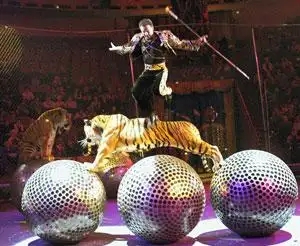Did you remember those days when you were so excited to hear there was a circus stopping by your town? Did you impatiently wait for the animals to come up in circus and to amaze you with those performances? If yes was your answer, you were definitely not alone. There were 330 other people out of 550 respondents who enjoyed the animal performances best, as to compare with human ones.
However, recently part of the world had been shocked with the video footage of animals cruelty in an infamous circus. This had arisen a controversy of whether we should use animals in circus or not. Little of us knew what exactly went behind the circus and how the animals were trained, despite the fact that they did give the best entertainment to mankind.
Most circuses travel around the world, and so do the animals. They even travel constantly, being accumulated to 50 weeks annually. On other words, 96% of the animals’ lifetimes are spent on travelling, mostly in chained and caged conditions. However, as the initial purpose of the cage is mainly for travelling purposes and not for the sake of animals, it is usually as big as 4 feet by 5 feet by 6 feet. This cage size is incomparable with the wildlife, where animals may have 200,000 feet cubic to reside in. For instance, tigers and lions may be caged over 90% of their travelling time, forced to do nearly all things inside the tiny cage; eat, drink, sleep, and even urinate.


Leave a comment